
Costume or fashion jewelry includes a range of decorative items worn for personal adornment that are manufactured as less expensive ornamentation to complement a particular fashionable outfit or garment as opposed to "real" (fine) jewelry, which is more costly and which may be regarded primarily as collectibles, keepsakes, or investments. From the outset, costume jewelry — also known as fashion jewelry — paralleled the styles of its more precious fine counterparts.

Jewellery consists of decorative items worn for personal adornment, such as brooches, rings, necklaces, earrings, pendants, bracelets, and cufflinks. Jewellery may be attached to the body or the clothes. From a western perspective, the term is restricted to durable ornaments, excluding flowers for example. For many centuries metal such as gold often combined with gemstones, has been the normal material for jewellery, but other materials such as glass, shells and other plant materials may be used.

A necklace is an article of jewellery that is worn around the neck. Necklaces may have been one of the earliest types of adornment worn by humans. They often serve ceremonial, religious, magical, or funerary purposes and are also used as symbols of wealth and status, given that they are commonly made of precious metals and stones.

A bracelet is an article of jewellery that is worn around the wrist. Bracelets may serve different uses, such as being worn as an ornament. When worn as ornaments, bracelets may have a supportive function to hold other items of decoration, such as charms. Medical and identity information are marked on some bracelets, such as allergy bracelets, hospital patient-identification tags, and bracelet tags for newborn babies. Bracelets may be worn to signify a certain phenomenon, such as breast cancer awareness, or for religious/cultural purposes.

An anklet, also called ankle chain, ankle bracelet or ankle string, is an ornament worn around the ankle. Barefoot anklets and toe rings historically have been worn for at least over 8,000 years by girls and women in Indus Valley, in South Asia where it is commonly known as pattilu, payal, golusu and sometimes as nupur. They have also been worn by Egyptian women since predynastic times. In the United States both casual and more formal anklets became fashionable from the 1930s to the late–20th century. While in Western popular culture both younger men and women may wear casual leather anklets, they are popular among barefoot women. Formal anklets are used by some women as fashion jewellery. Anklets are an important piece of jewellery in Indian marriages, worn along with saris.

Cufflinks are items of jewelry that are used to secure the cuffs of dress shirts. Cufflinks can be manufactured from a variety of different materials, such as glass, stone, leather, metal, precious metal or combinations of these. Securing of the cufflinks is usually achieved via toggles or reverses based on the design of the front section, which can be folded into position. There are also variants with chains or a rigid, bent rear section. The front sections of the cufflinks can be decorated with gemstones, inlays, inset material or enamel and designed in two or three-dimensional forms.

Jewellery findings are the parts used to join jewellery components together to form a completed article.
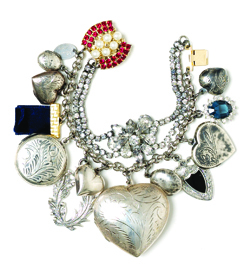
A charm bracelet is a type of bracelet which carries personal jewelled ornaments or "charms", such as decorative pendants or trinkets. The decorative charms usually carry personal or sentimental attachment by the owner.
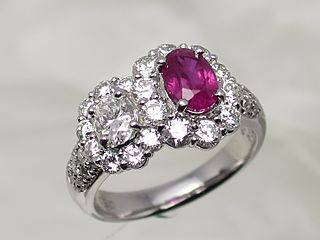
A ring is a round band, usually made of metal, worn as ornamental jewelry. The term "ring" by itself denotes jewellery worn on the finger; when worn as an ornament elsewhere, the body part is specified within the term, e.g., earrings, neck rings, arm rings, and toe rings. Rings fit snugly around or in the part of the body they ornament, so bands worn loosely, like a bracelet, are not rings. Rings may be made of almost any hard material: wood, bone, stone, metal, glass, gemstone or plastic. They may be set with gemstones or with other types of stone or glass.

An Italian Charm bracelet, also known in the US as a Nomination bracelet, is a series of individual modular links hooked together on a stretchy band to form a single charm bracelet. A typical Italian charm bracelet comprises eighteen charm links. Each link features a charming face soldered onto the actual charm link.
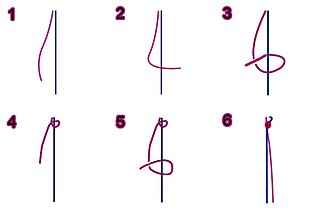
A friendship bracelet is a decorative bracelet given by one person to another as a symbol of friendship. Friendship bracelets are often handmade, usually of embroidery floss or thread and are a type of macramé. There are various styles and patterns, but most are based on the same simple half-hitch knot. They represent a friendship that is strong and everlasting.

Klutz is a publishing company started in Palo Alto, California in 1977. It was acquired by Nelvana in April 2000, and became a subsidiary of Scholastic Inc. in 2002. The first Klutz book was a how-to guide titled Juggling for the Complete Klutz, which came provided with juggling beanbags attached in a mesh bag. The book was created by three friends who graduated from Stanford University: Darrell Lorentzen, John Cassidy, and B.C. Rimbeaux. Since then, the company has continued to specialize in activity-driven books sold along with other items needed for the activity. Not all the books are about developing a skill; there has also been a geography book containing, among other physical attachments, packets of rice corresponding to the average daily caloric intake among the poorest people of the world. Many of their books are spiral bound and teach various crafts. The items needed are usually included with the book, e.g. the juggling guide. The Klutz credo is: Create wonderful things, be good, have fun.
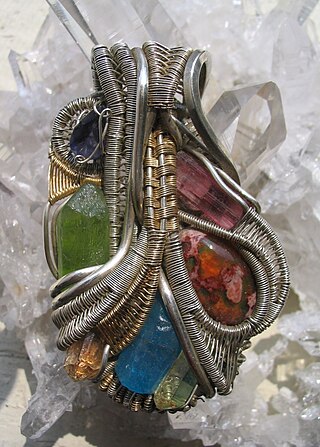
Wire wrapping is one of the oldest techniques for making handmade jewelry. This technique is done with jewelry wire and findings similar to wire to make components. Wire components are then connected to one another using mechanical techniques with no soldering or heating of the wire. Frequently, in this approach, a wire is bent into a loop or other decorative shape and then the wire is wrapped around itself to finish the wire component. This makes the loop or decorative shape permanent. The technique of wrapping wire around itself gives this craft its name of wire wrapping.
Adana Ethnography Museum, exhibits the ethnographic works, the inscriptions of Adana's landmarks and epitaph and gravestones of Adana's leading figures. The museum was opened in 1983 at the former Greek Church after Archeological Museum moved to its new location. As of May 2012, the museum was closed as it would move to the newly built Museum Complex in 2016. In April 2019 it had not yet been realised.
Tiger tail wire is a thin wire encased in nylon often used in beaded jewellery, and particularly suited to stringing heavy beads and sharp beads, which tend to fray other kinds of thread. For this reason, tiger tail is the thread of choice for gemstones.
Wonder Loom is a toy loom designed for children, used mainly as a way for them to create colorful bracelets and charms by weaving rubber bands together into Brunnian links. It was designed in 2013 by Choon's Designs LLC of Wixom, Michigan and licensed to The Beadery Craft Products in Hope Valley, Rhode Island as the exclusive manufacturer.
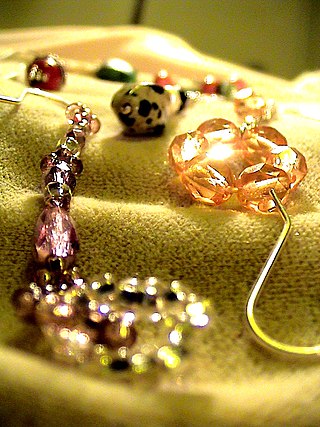
A bijou from the French bijou is an intricate jewellery piece incorporated into clothing, or worn by itself on the body.

Ancient Roman jewelry was characterized by an interest in colored gemstones and glass, in contrast with their Greek predecessors who focused primarily on the production of high-quality metalwork by practiced artisans. Extensive control of Mediterranean territories provided an abundance of natural resources to utilize in jewelry making. Participation in trade allowed access to both semi-precious and precious stones that traveled down the Persian Silk Road from the East.
Daisy London is a British jewellery brand founded in 2009. It has an e-commerce platform and distributor in UK and internationally.

Diana, Princess of Wales, owned a collection of jewels both as a member of the British royal family and as a private individual. These were separate from the coronation and state regalia of the crown jewels. Most of her jewels were either presents from foreign royalty, on loan from Queen Elizabeth II, wedding presents, purchased by Diana herself, or heirlooms belonging to the Spencer family.